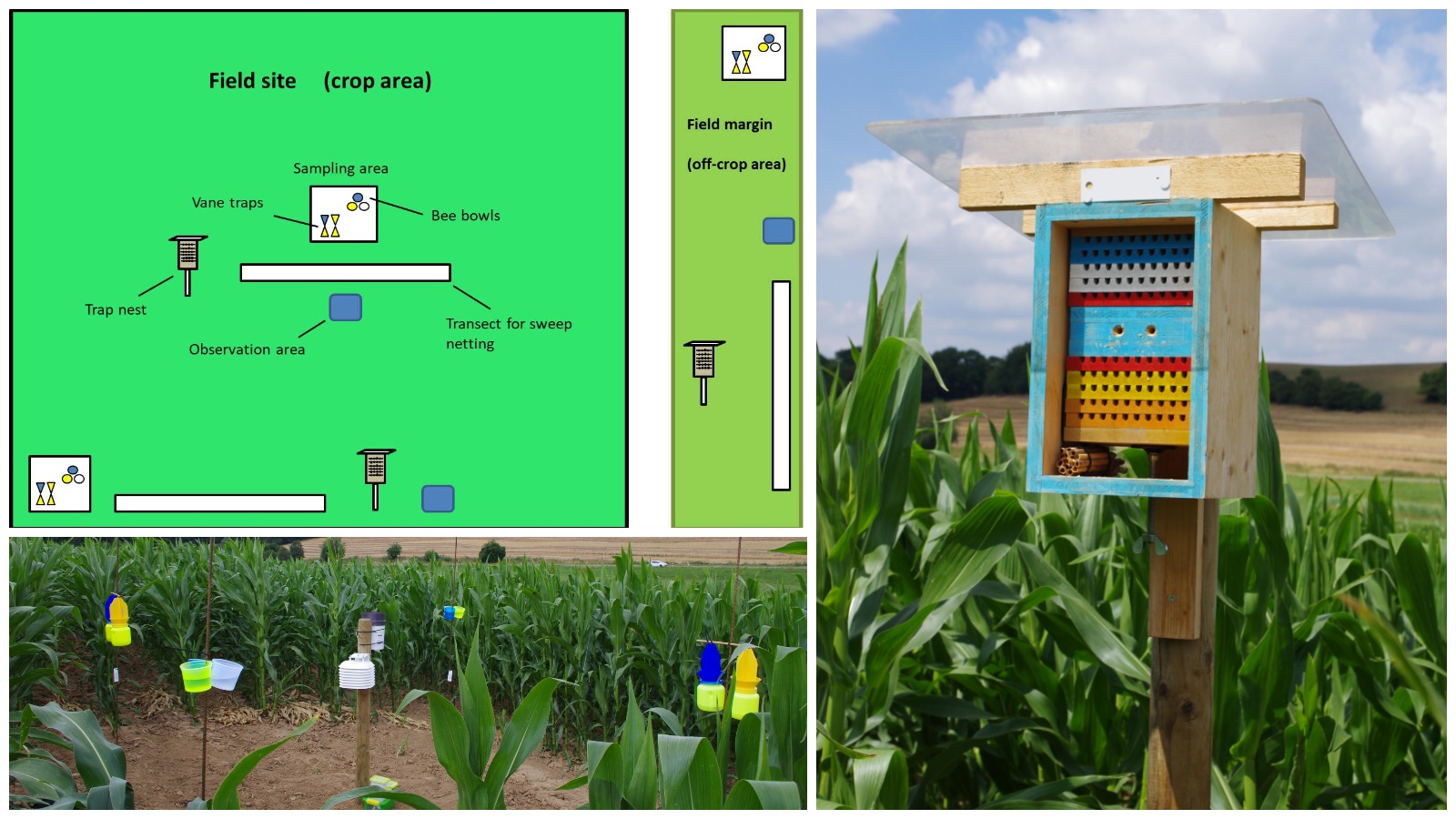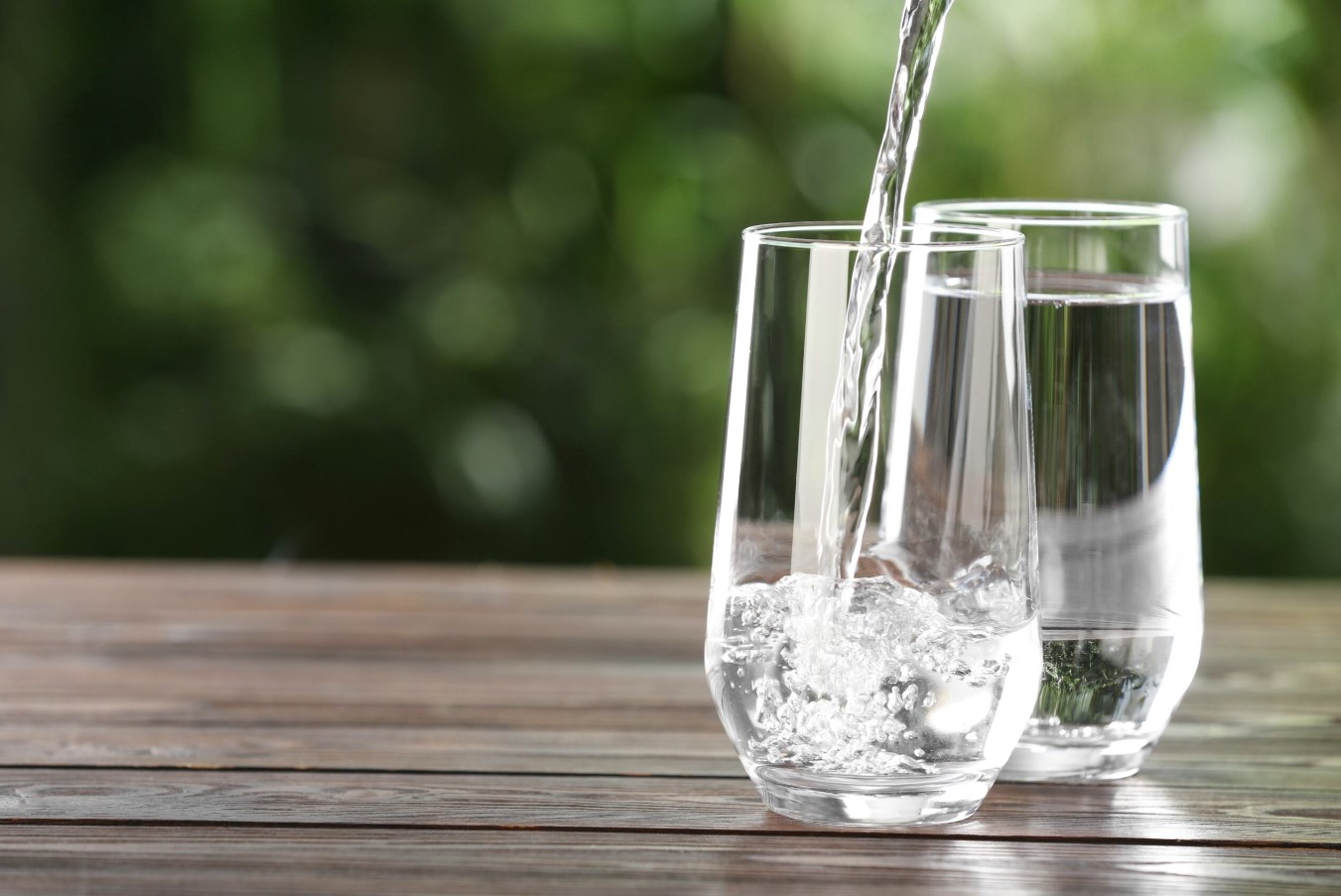Pollinator monitoring studies focus on native bee communities occurring in agroecosystems and are performed under field conditions
They can either be used to evaluate potential exposure of pollinators to plant protection products in different crops or agricultural scenarios or, to assess possible effects of treatments at a larger scale taking into account other influencing parameters like the management intensity, landscape composition, growing season etc.
Generally, the abundance and species richness of naturally occurring pollinators in a crop and adjacent field margins will be investigated. For crops considered to be not attractive as foraging and nesting habitats for honey bees, wild bees and other pollinators, the comparison of in-field and off-crop abundance and richness can help to understand if pollinators are exposed to plant protection products or not. This might include temporal as well as spatial differences (timing of monitoring and placement of monitoring within the field and landscape).
To evaluate a wide range of pollinator species occurring in a specific crop, several methods are available
We recommend using a combination of different types of sampling techniques: non-selective and selective, because wild bees are often highly specialized in their floral choices, nesting behavior and phenology e.g., so that their populations can undergo strong spatio-temporal variations. For the non-selective methods two different types of traps might be used in combination: Vane traps and Bee bowls (pan traps). These traps can be installed at different locations: i.e. in the centre of the fields, at the borders of the fields and outside in the adjacent field margin and different heights adapted to the type of the crop which is investigated. As selective method, sweep netting and observation can be used via standardized or variable transect walks in a defined distance and time interval or at fixed locations.
Furthermore, the importance of the crop as a possible pollen source compared to other available pollen sources at the time of the year can be assessed. Trap nests that can be set up at different locations for hypergeic (above-ground nesting) solitary wild bee species that breed in woody cavities to assess their pollen sources by pollen identification of pollen mass samples. If required, analysis of residue levels in solitary bee provision can be assessed additionally with samples of the stored pollen mass.

Pollinator survey activities
Experimental/Field phase:
- Non-selective wild bee sampling
- Set up of sampling areas at different locations at the field site (centre, border, field margin)
- Two types of different traps are used to attract wild bees in the sampling areas
- Bee bowls: cluster of three different colours, filled with water
- Vane traps: pair of bottle-like traps with two different colours, filled with water
- Selective wild bee sampling
- Sweep netting with standardized or variable transect walks in-/off the crop
- Observation plots on fixed locations (flight intensity, floral visitation behavior)
- Pollen mass sampling from trap nests of hypergeic nesting wild bees
- Residue analysis
- Pollen source identification
- Flowering survey
- Recording of plant diversity and potential flowering and nesting resources at the field site surrounding
Lab phase:
- Sample analysis
- Sorting, preparation and taxonomic identification of wild bee samples to species level
- Identification of pollen source
- Residue analysis of pollen mass















